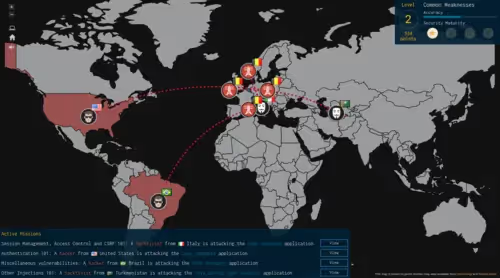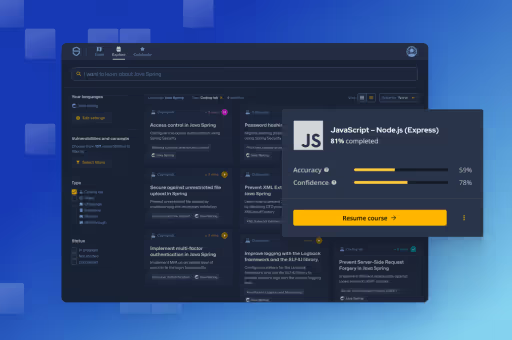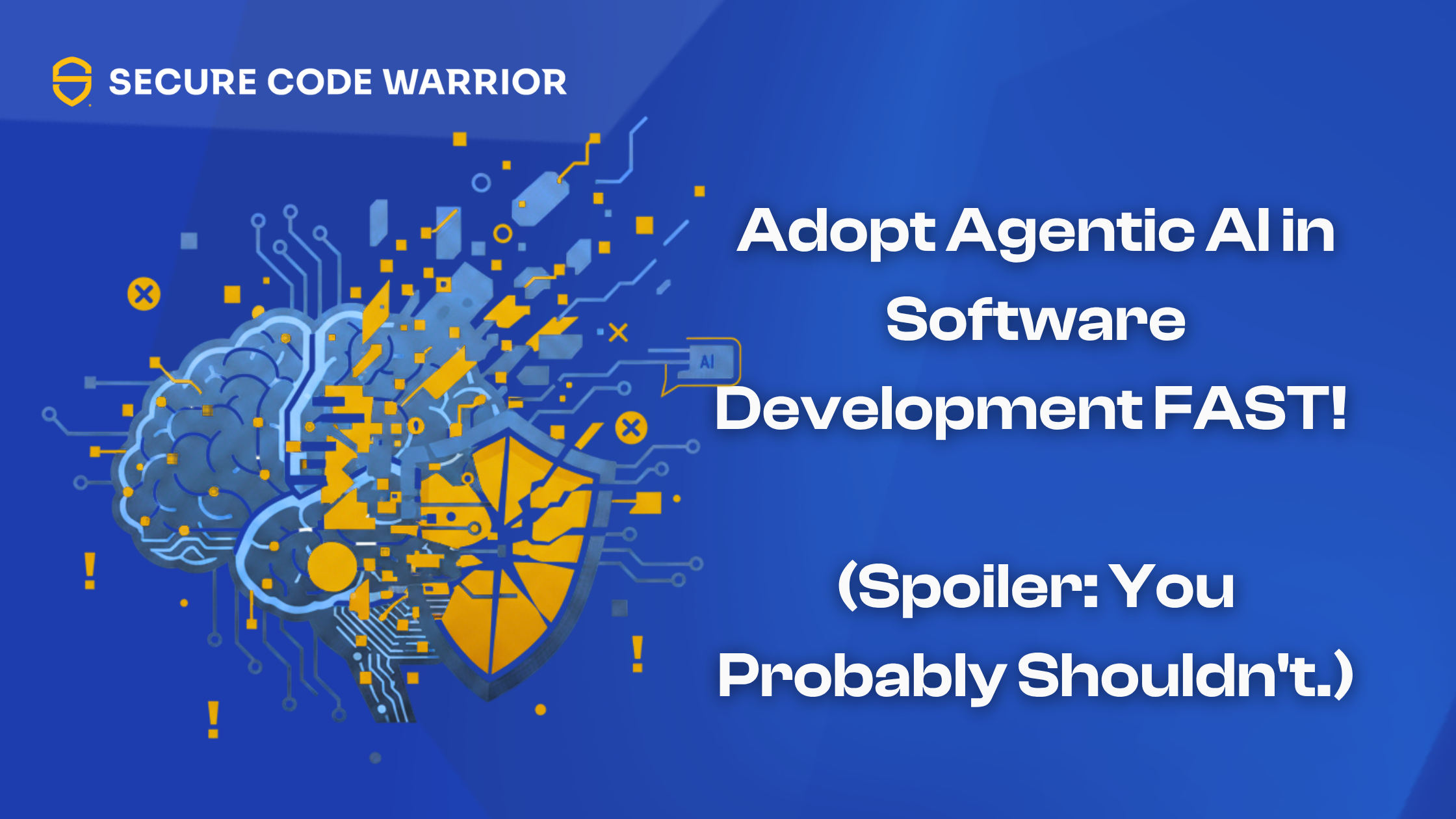
How secure coding guidelines evolve
Last week I was researching vulnerabilities in Java Spring to bring our secure coding guidelines up to date. I was going through the existing challenges on our platform and noticed a few on XSS through displaying url parameters in JSP pages. The incorrect code example would look something similar to the following:
<input type="text" name="username" value="${param.username}">
The correct solution was removing the URL parameter altogether and the description mentions that escaping the URL parameter the correct way is also safe.
Now, my job is to formulate the secure coding guideline in a way that is clear to developers and restricts them as little as possible while still writing secure code. In this case, I would prefer to let developers keep their intended functionality and recommend them to do it securely by escaping the URL parameter. This way, the code no longer contains a XSS vulnerability. The above example can be secured like this:
<input type="text" name="username" value="${fn:escapeXml(param.username)}">
And this was our secure coding guideline for a few days, until I stumbled on an OWASP page on expression language injection. This page describes how the Spring Expression Language (SpEL) can be abused for injection with some serious impact, including remote code execution. It was up to me to figure out if there could be cases where code adhering to our secure coding guideline can still be affected by this vulnerability. So I wrote a quick test application to evaluate SpEL expressions, and tested input with and without Xml escaping to see if I could find some scenarios that would not be caught. And I did, there are malicious expressions that do not contain any characters caught by XmlEscape. I published the working demo on our github, which you can find here.
And of course I updated our secure coding guideline which now reads: "Do not display or evaluate URL parameters using the Spring Expression Language (SpEL)."
The overall impact of this issue is High, for the following reasons: - An attacker could modify and invoke functionality on the application server. - Unauthorized access to data and functionality, as well as account hijacking and remote code execution. - Confidentiality, and Integrity concerns from a successful attack.
https://www.owasp.org/index.php/Expression_Language_Injection


Last week I was researching vulnerabilities in Java Spring to bring our secure coding guidelines up to date.
Application Security Researcher - R&D Engineer - PhD Candidate

Secure Code Warrior is here for your organization to help you secure code across the entire software development lifecycle and create a culture in which cybersecurity is top of mind. Whether you’re an AppSec Manager, Developer, CISO, or anyone involved in security, we can help your organization reduce risks associated with insecure code.
Book a demoApplication Security Researcher - R&D Engineer - PhD Candidate


Last week I was researching vulnerabilities in Java Spring to bring our secure coding guidelines up to date. I was going through the existing challenges on our platform and noticed a few on XSS through displaying url parameters in JSP pages. The incorrect code example would look something similar to the following:
<input type="text" name="username" value="${param.username}">
The correct solution was removing the URL parameter altogether and the description mentions that escaping the URL parameter the correct way is also safe.
Now, my job is to formulate the secure coding guideline in a way that is clear to developers and restricts them as little as possible while still writing secure code. In this case, I would prefer to let developers keep their intended functionality and recommend them to do it securely by escaping the URL parameter. This way, the code no longer contains a XSS vulnerability. The above example can be secured like this:
<input type="text" name="username" value="${fn:escapeXml(param.username)}">
And this was our secure coding guideline for a few days, until I stumbled on an OWASP page on expression language injection. This page describes how the Spring Expression Language (SpEL) can be abused for injection with some serious impact, including remote code execution. It was up to me to figure out if there could be cases where code adhering to our secure coding guideline can still be affected by this vulnerability. So I wrote a quick test application to evaluate SpEL expressions, and tested input with and without Xml escaping to see if I could find some scenarios that would not be caught. And I did, there are malicious expressions that do not contain any characters caught by XmlEscape. I published the working demo on our github, which you can find here.
And of course I updated our secure coding guideline which now reads: "Do not display or evaluate URL parameters using the Spring Expression Language (SpEL)."
The overall impact of this issue is High, for the following reasons: - An attacker could modify and invoke functionality on the application server. - Unauthorized access to data and functionality, as well as account hijacking and remote code execution. - Confidentiality, and Integrity concerns from a successful attack.
https://www.owasp.org/index.php/Expression_Language_Injection

Last week I was researching vulnerabilities in Java Spring to bring our secure coding guidelines up to date. I was going through the existing challenges on our platform and noticed a few on XSS through displaying url parameters in JSP pages. The incorrect code example would look something similar to the following:
<input type="text" name="username" value="${param.username}">
The correct solution was removing the URL parameter altogether and the description mentions that escaping the URL parameter the correct way is also safe.
Now, my job is to formulate the secure coding guideline in a way that is clear to developers and restricts them as little as possible while still writing secure code. In this case, I would prefer to let developers keep their intended functionality and recommend them to do it securely by escaping the URL parameter. This way, the code no longer contains a XSS vulnerability. The above example can be secured like this:
<input type="text" name="username" value="${fn:escapeXml(param.username)}">
And this was our secure coding guideline for a few days, until I stumbled on an OWASP page on expression language injection. This page describes how the Spring Expression Language (SpEL) can be abused for injection with some serious impact, including remote code execution. It was up to me to figure out if there could be cases where code adhering to our secure coding guideline can still be affected by this vulnerability. So I wrote a quick test application to evaluate SpEL expressions, and tested input with and without Xml escaping to see if I could find some scenarios that would not be caught. And I did, there are malicious expressions that do not contain any characters caught by XmlEscape. I published the working demo on our github, which you can find here.
And of course I updated our secure coding guideline which now reads: "Do not display or evaluate URL parameters using the Spring Expression Language (SpEL)."
The overall impact of this issue is High, for the following reasons: - An attacker could modify and invoke functionality on the application server. - Unauthorized access to data and functionality, as well as account hijacking and remote code execution. - Confidentiality, and Integrity concerns from a successful attack.
https://www.owasp.org/index.php/Expression_Language_Injection

Click on the link below and download the PDF of this resource.
Secure Code Warrior is here for your organization to help you secure code across the entire software development lifecycle and create a culture in which cybersecurity is top of mind. Whether you’re an AppSec Manager, Developer, CISO, or anyone involved in security, we can help your organization reduce risks associated with insecure code.
View reportBook a demoApplication Security Researcher - R&D Engineer - PhD Candidate
Last week I was researching vulnerabilities in Java Spring to bring our secure coding guidelines up to date. I was going through the existing challenges on our platform and noticed a few on XSS through displaying url parameters in JSP pages. The incorrect code example would look something similar to the following:
<input type="text" name="username" value="${param.username}">
The correct solution was removing the URL parameter altogether and the description mentions that escaping the URL parameter the correct way is also safe.
Now, my job is to formulate the secure coding guideline in a way that is clear to developers and restricts them as little as possible while still writing secure code. In this case, I would prefer to let developers keep their intended functionality and recommend them to do it securely by escaping the URL parameter. This way, the code no longer contains a XSS vulnerability. The above example can be secured like this:
<input type="text" name="username" value="${fn:escapeXml(param.username)}">
And this was our secure coding guideline for a few days, until I stumbled on an OWASP page on expression language injection. This page describes how the Spring Expression Language (SpEL) can be abused for injection with some serious impact, including remote code execution. It was up to me to figure out if there could be cases where code adhering to our secure coding guideline can still be affected by this vulnerability. So I wrote a quick test application to evaluate SpEL expressions, and tested input with and without Xml escaping to see if I could find some scenarios that would not be caught. And I did, there are malicious expressions that do not contain any characters caught by XmlEscape. I published the working demo on our github, which you can find here.
And of course I updated our secure coding guideline which now reads: "Do not display or evaluate URL parameters using the Spring Expression Language (SpEL)."
The overall impact of this issue is High, for the following reasons: - An attacker could modify and invoke functionality on the application server. - Unauthorized access to data and functionality, as well as account hijacking and remote code execution. - Confidentiality, and Integrity concerns from a successful attack.
https://www.owasp.org/index.php/Expression_Language_Injection
Table of contents
Application Security Researcher - R&D Engineer - PhD Candidate

Secure Code Warrior is here for your organization to help you secure code across the entire software development lifecycle and create a culture in which cybersecurity is top of mind. Whether you’re an AppSec Manager, Developer, CISO, or anyone involved in security, we can help your organization reduce risks associated with insecure code.
Book a demoDownloadResources to get you started
Threat Modeling with AI: Turning Every Developer into a Threat Modeler
Walk away better equipped to help developers combine threat modeling ideas and techniques with the AI tools they're already using to strengthen security, improve collaboration, and build more resilient software from the start.










%20(1).avif)
.png)


.png)



